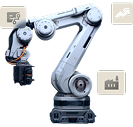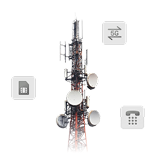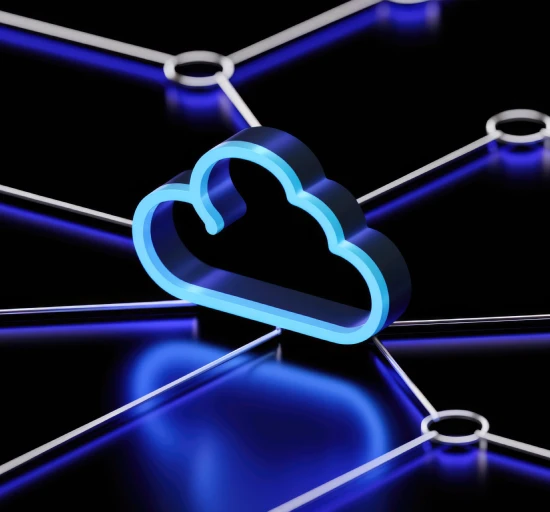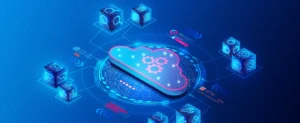
As organizations grow and adapt to new digital opportunities, the tools and systems they rely on must evolve as well. Legacy middleware, which once served as the backbone for enterprise IT, is now struggling to meet the demands of today’s fast-paced, data-driven world. These aging systems often lack the flexibility, scalability, and efficiency required to keep up with the rapid integration of cloud, mobile, and other modern technologies.
To address these challenges, businesses are increasingly turning to Integration Platform as a Service (iPaaS) solutions. iPaaS provides the modern capabilities necessary to streamline integration efforts, enabling organizations to connect their diverse applications and data sources quickly and efficiently. In this blog, we’ll explore seven key reasons why transitioning from legacy middleware to a modern iPaaS platform is essential for staying competitive and responsive in today’s digital landscape.
1. Overburdened IT Teams and Increased Shadow IT
Legacy middleware systems often require highly skilled and specialized staff to manage integrations. These systems can be cumbersome, time-consuming, and costly to maintain, leaving IT teams stretched thin. The constant demand for new integrations puts pressure on IT, often turning them into the “department of no,” where requests are delayed or rejected due to resource constraints.
This bottleneck can lead to the rise of Shadow IT, where business users bypass the IT department and seek out their own solutions to meet integration needs, increasing security risks and creating an unmanageable web of disconnected tools.
Solution: A modern iPaaS platform provides a cloud-based development environment that reduces reliance on specialized staff. With drag-and-drop interfaces and low-code tools, teams across various departments can easily create and manage integrations. This frees up IT resources and reduces the risk of Shadow IT, empowering the organization to move faster while maintaining control and security.
2. Struggling to Keep Up with IT Modernization
As technologies like cloud, IoT, big data, and AI become increasingly integrated into business operations, the limitations of legacy middleware become apparent. Legacy systems weren’t designed to support the fast-evolving, diverse ecosystem of modern applications. Deploying new integrations with legacy middleware can be slow and costly, hampering an organization’s ability to innovate and compete in the digital economy.
Solution: iPaaS solutions are designed with modern business needs in mind. They are cloud-native and support a wide variety of modern applications, making it easy to integrate both on-premises and cloud-based systems. With iPaaS, businesses can quickly scale and adapt their IT infrastructure to meet the demands of today’s digital landscape.
3. Complex and Time-Consuming Middleware Deployments
Deploying legacy middleware is a labor-intensive process that requires coordination between multiple teams, including server, storage, and networking specialists. Each deployment involves creating separate development, testing, and production environments, and scaling these systems globally adds even more complexity. Managing multiple instances of middleware across different environments can quickly become overwhelming and result in a significant drain on resources.
Solution: iPaaS simplifies deployments by removing the need for on-premise infrastructure. Since iPaaS operates in the cloud, it eliminates the need for managing multiple instances of middleware, dramatically reducing the time and effort required to deploy and maintain integrations. A lightweight runtime engine can be installed for on-premise connections, streamlining operations and freeing IT teams to focus on more strategic initiatives.
4. High Costs of Maintenance and Upgrades
Maintaining legacy middleware is expensive. It requires both the upkeep of software and the management of the underlying infrastructure. Additionally, finding and retaining specialized staff who can manage legacy middleware systems can be challenging and costly. These costs are magnified when organizations have to replicate middleware environments across multiple global locations.
Solution: iPaaS platforms offer a significant cost-saving advantage. With minimal hardware and software to maintain, iPaaS reduces the need for expensive infrastructure. Moreover, iPaaS solutions provide a centralized view of your integrations, making monitoring, maintaining, and updating systems more efficient. The result is a lower total cost of ownership and greater agility for global operations.
5. Sinking Budget into Servers and Software
Legacy middleware often requires significant upfront investments in hardware, software, and storage. These capital expenditures can strain IT budgets, leaving little room for modernization initiatives. Middleware licensing costs are also typically based on processing power, adding to the burden when hardware upgrades are required to meet the growing demands of the business.
Solution: By shifting to an iPaaS cloud integration model, businesses can avoid the high costs associated with maintaining on-premise infrastructure. With iPaaS, organizations pay for what they use, making it easier to allocate resources to innovation rather than infrastructure. The platform’s scalability ensures that as the organization grows, the iPaaS can scale with it—without requiring costly hardware investments.
6. Costly and Lengthy Developer Involvement
Legacy middleware environments are highly complex and often require costly, specialized developers and consultants to manage upgrades, troubleshoot issues, and implement changes. Middleware upgrades can take months—or even years—and introducing new functionality can lead to bugs or other problems that disrupt business operations.
Solution: A modern iPaaS platform simplifies the integration process, reducing reliance on expensive developers. With multi-tenant architectures, iPaaS vendors can handle upgrades and patch issues across all customers, ensuring a smoother process and faster delivery of new features. This makes it easier for businesses to scale their integration capabilities without heavy investments in development resources.
7. Difficulty Supporting Global Operations
For global enterprises, supporting operations across different locations can be a logistical nightmare with legacy middleware. Redundant instances of middleware are often required in multiple regions to meet local compliance and performance needs, resulting in duplicated environments and added complexity. Managing these systems remotely can also be a challenge due to latency issues and performance limitations.
Solution: iPaaS platforms offer a single-instance solution that provides global visibility and control. This means businesses can manage all their applications and data from one central location, making it easier to ensure compliance and streamline operations across different regions. With iPaaS, teams can collaborate and share data in real-time, enabling smoother workflows and faster decision-making on a global scale.
Unlock New Possibilities with iPaaS
The integration landscape is changing rapidly as businesses adopt cloud services, IoT, mobile applications, and other technologies that demand faster, more flexible connections. Legacy middleware systems are simply not designed to meet these new demands, and sticking with outdated systems can hold businesses back from achieving their full potential.
Migrating to a modern iPaaS platform can help organizations overcome the limitations of legacy middleware, offering greater speed, scalability, and cost-efficiency. Whether you’re looking to streamline operations, reduce costs, or drive innovation, iPaaS provides the flexibility and agility your business needs to thrive in today’s digital world.
Ready to upgrade your integration capabilities? Tellestia’s team of iPaaS experts can help you seamlessly migrate from legacy middleware to a modern iPaaS platform. Contact us today at info@tellestia.com to learn more about how we can help transform your business.
Shyam Sundar
Technical Architect
Shyam Sundar is a Technical Architect at Tellestia, with a deep passion for building scalable and future-ready tech solutions. He shares insights on architecture, engineering best practices, and emerging technologies.
Cloud Integration
Digital Transformation
iPaaS
Legacy Middleware
Legacy Middleware Migration

























